Trench Coat History: From Trench Warfare to Timeless Style
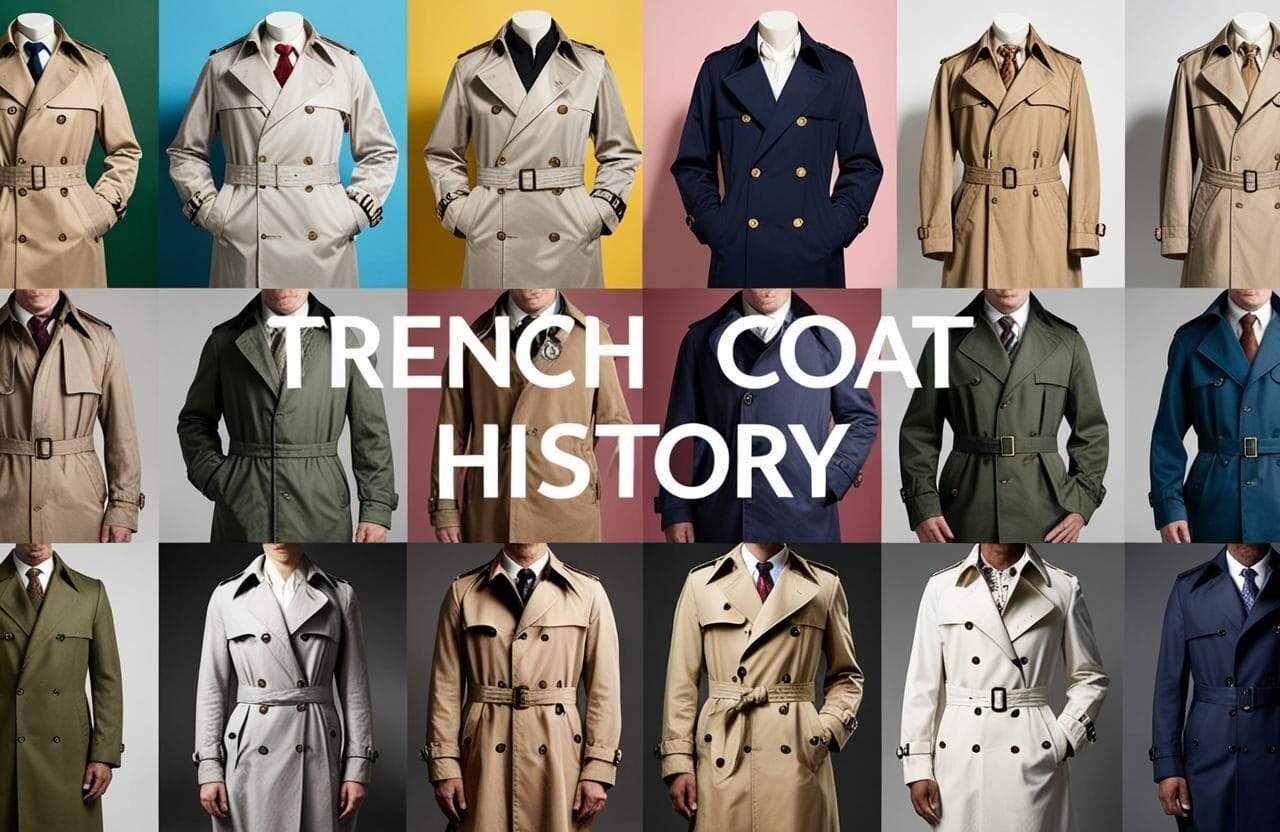
As an Amazon Associate, I earn from qualifying purchases
Few garments can claim the fascinating journey that the trench coat has traveled—from military necessity to fashion icon. This quintessential British coat has transcended its humble beginnings. It has become one of the most recognizable and enduring pieces in fashion history.
The trench coat is known for its distinctive silhouette. Its practical design features add to its appeal. Its rich cultural associations have cemented its place in wardrobes worldwide.
The Origins of the Trench Coat: From Military Uniform to Fashion Staple
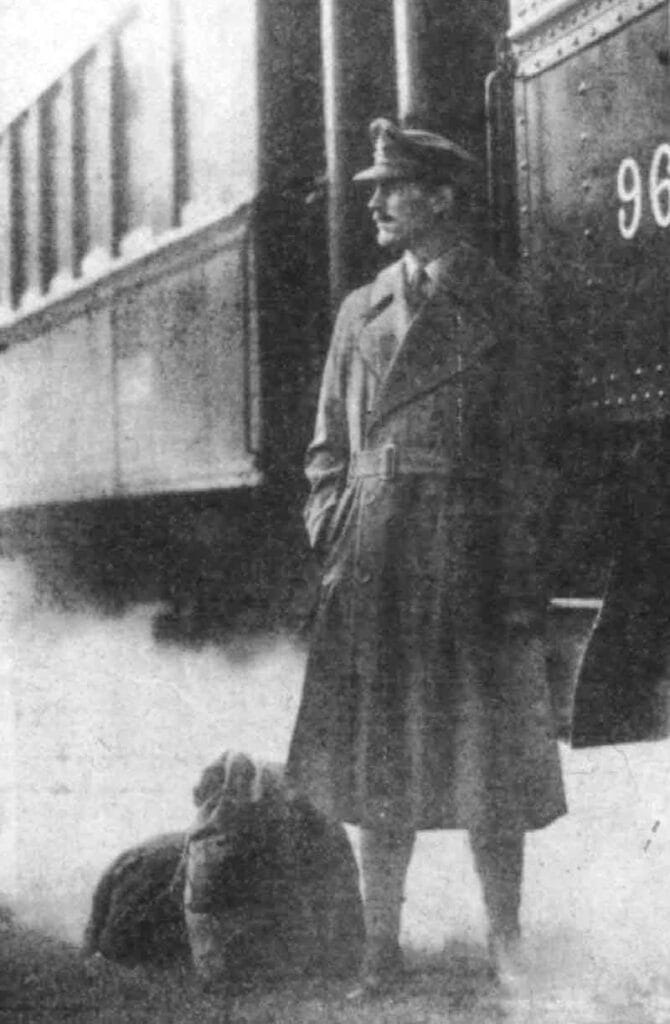
The trench coat’s journey from battlefield necessity to fashion icon represents one of the most fascinating evolution stories in fashion history. Few garments can boast such a profound transformation while maintaining their essential character and appeal across generations. The history of the trench coat is deeply intertwined with innovation, military practicality, and, eventually, timeless style.
Who Invented the Trench Coat? (Thomas Burberry’s Legacy)
The story of the trench begins with inventor Thomas Burberry, who revolutionized outerwear when he created gabardine in 1879. This tightly woven, waterproof fabric became the foundation upon which the modern trench coat was built. However, the origins of the trench coat aren’t without controversy, as both Burberry and Aquascutum take credit for its invention.
Thomas Burberry’s revolutionary gabardine fabric was a game-changer—lightweight yet durable, waterproof yet breathable. Before this innovation, waterproof coats were typically heavy, uncomfortable garments made stiff with wax or rubber. Inventor Charles Macintosh had created waterproof outerwear earlier in the century. This is why the term “Mackintosh” is used. However, these coats weren’t breathable. They often became uncomfortably hot and sticky.

Meanwhile, John Emary, who founded Aquascutum, had been developing water-repellent fabrics for military use since the Crimean War. This dual development history explains why both Burberry and Aquascutum take credit for the trench coat’s creation, though Burberry’s version would ultimately become more closely associated with the iconic garment.
Early Uses: Trench Coats in World War I
The trench coat as we know it today truly came into its own during the First World War. The British military officially adopted the trench coat as part of officers’ attire, making it a standard issue for British officers serving in the trenches of WWI. In 1901, the War Office commissioned Burberry to redesign officers’ coats. This was done to better suit modern warfare. By the Great War, the trench coat had become an essential military uniform.
Soldiers in the trenches needed practical garments that could withstand harsh weather conditions while allowing freedom of movement. The trench coat, with its waterproof gabardine material, protected from the elements without the weight and restriction of previous military outerwear. What began as a military dress necessity soon transcended its utilitarian origins.
Beyond mere function, the trench coat reflected the social hierarchy of the military—officers wore trench coats while enlisted men typically did not. Owning a Burberry trench became something of a status symbol, and many officers purchased their own as an act of patriotism and contribution to the war effort.
Key Features Inspired by Military Design (Epaulets, D-Rings, and Storm Shields)
The modern-day trench retains many features that were originally designed for purely practical military purposes. Each element of the trench coat served a specific function for British officers:
The epaulet (shoulder straps) displayed an officer’s rank insignia while also providing a place to attach gloves or other equipment. The storm flap across the chest allowed water to run off instead of seeping into the coat. A storm shield at the upper back provided additional waterproofing while allowing ventilation.
D-rings on the belt weren’t decorative—they were designed to hold military equipment like grenades, mapcases, or swords. The belt itself, with its distinctive buckle, allowed soldiers to adjust the fit depending on what they were wearing underneath. The large pockets provided ample space for storing military essentials.
Even the wide lapels had a purpose, as they could be buttoned up to the neck for additional protection against wind and rain. The double-breasted design provided extra warmth and protection against the elements. The length was perfect for keeping the wearer dry while trudging through muddy trenches.
How Trench Coats Became a Symbol of Hollywood Glamour
After WWI, the popularity of the trench coat soared as veterans continued wearing their military-issued coats in civilian life. But it was Hollywood that truly cemented the trench coat as a fashion staple and symbol of sophistication and style.
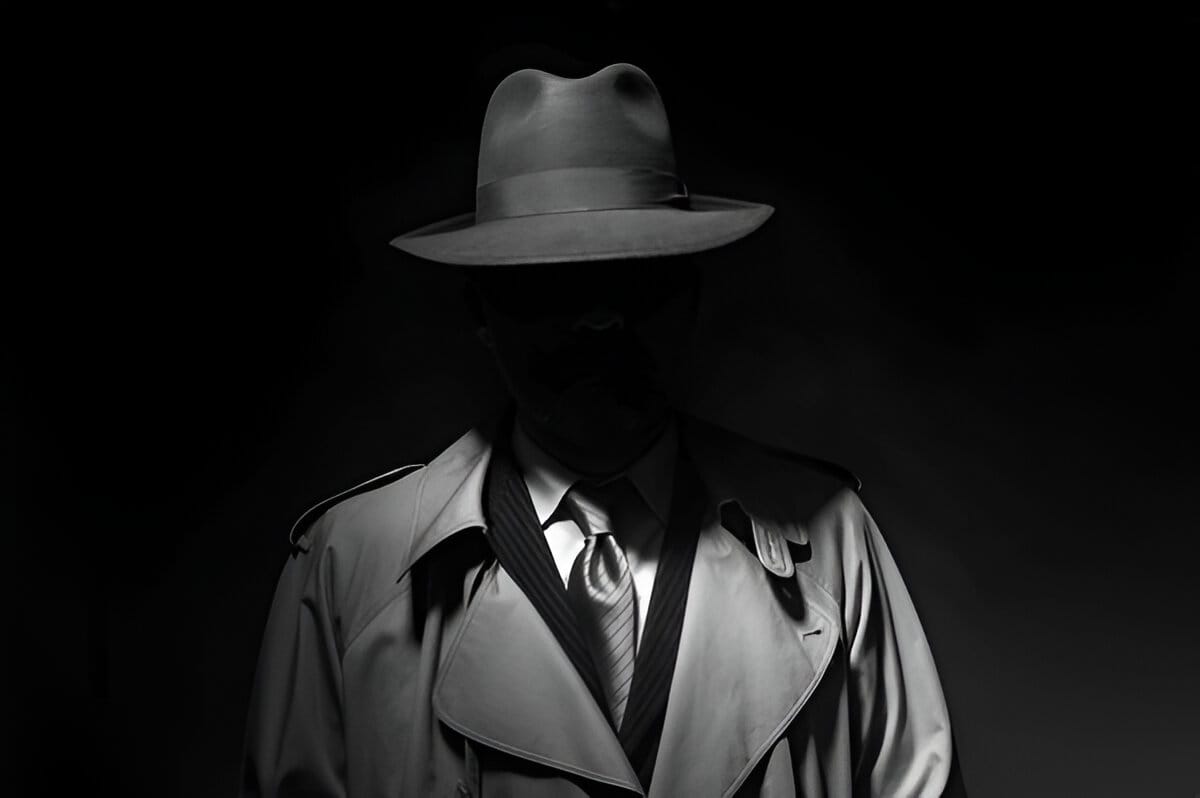
In the 1930s and 1940s, the trench coat became associated with the film noir genre, where it was worn by both detectives and gangsters. The image of Humphrey Bogart in a beige trench coat in “Casablanca” is perhaps the most iconic example. It shows how this military garment transformed into a fashion icon. Leading men like Bogart gave the trench coat an air of mystery and intrigue that appealed to the public imagination.
Women too embraced the trench, with stars like Marlene Dietrich adopting it as part of their signature look. Dietrich and other femme fatales of the era helped transform the trench coat from a strictly masculine military uniform into a versatile garment that could be both powerful and feminine.
Burberry’s Role in Popularizing Trench Coats
While the trench coat originated as military wear, Burberry played a pivotal role in transitioning it to civilian fashion. After the war, Burberry trench coats became increasingly popular among civilians. The company refined the design for everyday wear. It maintained its quintessential British identity.
Burberry’s signature check lining, introduced in the 1920s, became a status symbol that endures to this day, making the Burberry trench instantly recognizable worldwide. The company continued to innovate with its gabardine fabric. They ensured that the waterproof qualities remained relevant for everyday wear. The breathable qualities also stayed practical.
By positioning the trench coat as a luxury item with practical benefits, Burberry elevated it from military necessity to high fashion. Their marketing emphasized the garment’s illustrious history. It highlighted its contemporary relevance as well. This approach created an aura of timeless sophistication around the trench coat. Few other pieces of outerwear have achieved this.
The 1960s–2000s: Trench Coats in Pop Culture and High Fashion
The trench coat continued its evolution throughout the latter half of the 20th century, adapting to changing fashion trends while maintaining its essential character. In the 1960s, the trench became associated with spies and secret agents in film and television, further enhancing its mysterious appeal.
During the 1970s, the fashion industry began to experiment more boldly with the trench coat’s silhouette. Designers introduced variations in length, color, and material, moving beyond the traditional beige gabardine to include leather, cotton, or wool blends, and even bright colors.
The 1980s saw the trench coat become a symbol of power dressing for both men and women in the corporate world. Its structured shape and authoritative associations made it perfect for the ambitious professional. High fashion designers began to put their spin on the classic trench, playing with proportions and details while respecting the garment’s heritage.
By the 1990s and 2000s, the trench coat had firmly established itself as a wardrobe essential that transcended seasonal trends. Luxury trench coats from heritage brands commanded premium prices, while more affordable versions made the style accessible to a broader audience.
Iconic Moments in Trench Coat History
Few moments in fashion history have had as lasting an impact as Audrey Hepburn’s appearance in a trench coat in “Breakfast at Tiffany’s.” Her character Holly Golightly’s beige trench paired with oversized sunglasses created an enduring image of sophistication. This image continues to inspire fashion enthusiasts today.
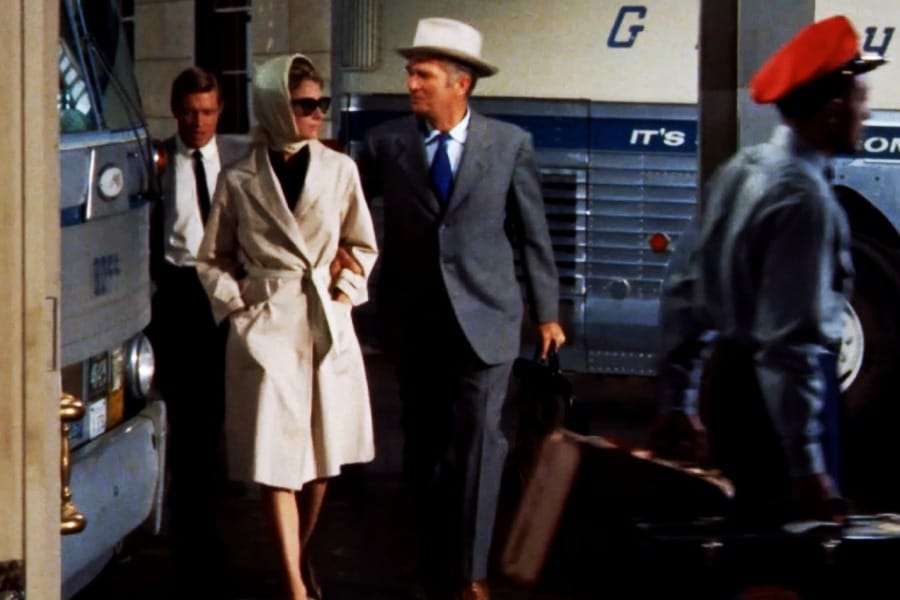
Hepburn’s natural elegance elevated the trench coat to new heights of fashion, demonstrating how this military-inspired garment could be utterly feminine and chic. The way she wore her trench coat—casually belted at the waist with the collar turned up—influenced how women styled their trenches for decades to come.
What made this moment so significant was how it positioned the trench coat as not just practical outerwear but as an integral part of a fashionable ensemble. Hepburn showed that a woman’s trench coat could be as sophisticated and stylish as any designer gown.
Trench Coats in The Matrix: Redefining Modern Style
In 1999, “The Matrix” revolutionized the image of the trench coat for a new generation. The long, flowing black leather trench coats worn by the characters instantly became iconic, representing a fusion of retro style and futuristic edge.
This reimagining of the trench coat demonstrated its remarkable adaptability. The filmmakers changed the material from traditional gabardine to leather. They also changed the color from beige to black. This created a completely different aesthetic while retaining the recognizable trench coat silhouette.
The impact of this film on trench coat style was enormous, inspiring countless fashion collections and street styles. It showed how the basic structure of the trench coat could be radically reinterpreted while still maintaining its identity and appeal.
Celebrity Influence: From Princess Diana to Modern Icons
Throughout its history, the trench coat has been embraced by influential figures who have each added their interpretation to this classic garment. Princess Diana was frequently photographed in her trench coats during the 1980s and 1990s, often styling them in ways that felt both regal and approachable.
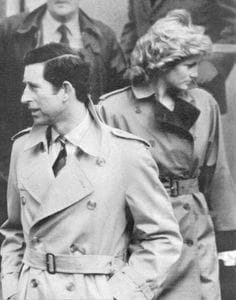
In more recent years, celebrities and royals like Meghan Markle, Kate Middleton, and Emma Watson have all been spotted in trench coats. This trend sends sales soaring. It happens whenever they appear in this classic piece of outerwear. Their styling choices—from traditional beige Burberry trenches to more contemporary interpretations—continue to influence how the public perceives and wears this garment.
Social media has amplified this celebrity influence. Hashtags like #trenchcoatstyle and #trenchcoatseason gather thousands of posts from fashion enthusiasts. They showcase their take on this classic.
Key Milestones in Trench Coat Design
The story of the trench coat is also a story of material innovation. Thomas Burberry’s original gabardine was revolutionary for its time—a tightly woven cotton that was both waterproof and breathable, unlike the heavy rubberized fabrics that preceded it.
Over the decades, trench coat materials have continued to evolve. During resource shortages in WWII, manufacturers experimented with different blends and treatments to maintain the coat’s waterproof qualities. By the 1960s, synthetic fabrics began to appear in some trench coat designs, offering new possibilities for weight and texture.
Today’s trench coats come in an astonishing array of materials, from traditional gabardine to high-tech water-resistant synthetics, luxurious cashmere blends, and even sustainable vegan leather alternatives. Despite these material changes, the essential design and silhouette of the trench coat have remained remarkably consistent.
The Shift from Function to Fashion: Color and Silhouette Changes
While the original trench coats were strictly khaki or beige—colors chosen for their practicality in wartime—contemporary trench coats come in virtually every color imaginable. This shift from purely functional design to fashion-forward thinking represents one of the most significant evolutions in trench coat history.
Similarly, the silhouette of the trench coat has been reinterpreted countless times. Designer versions might feature an oversized fit, an asymmetrical closure, or a dramatically shortened or lengthened hem. Yet somehow, these variations remain recognizably “trench coats,” a testament to the power of the original design.
Seasonal fashion shows regularly feature trench coats with dramatic alterations—from cropped lengths to exaggerated proportions—that push the boundaries of what a trench coat can be while still referencing its iconic status.
Gender Fluidity: How Trench Coats Became Unisex
Perhaps one of the most significant aspects of trench coat design history is how it transcended gender boundaries long before “gender-fluid fashion” was a common term. The basic design of the trench coat has always been relatively unchanged. Men’s and women’s trench coat styles have minor adjustments for fit.
In the 1930s and 1940s, actresses like Marlene Dietrich challenged gender norms by wearing trench coats in a manner typically associated with men. By the 1970s, the lines had blurred significantly, with trench coats becoming genuinely unisex garments.
Today, most fashion brands offer trench coats with similar styling for all genders, perhaps with slight variations in cut and sizing but maintaining the same essential design features. This gender inclusivity has contributed to the trench coat’s enduring popularity and relevance.
Cultural Significance: Symbolism in Film and Literature
Few garments carry as much symbolic weight as the trench coat. In film noir, detective stories, and spy novels, the trench coat signals mystery, intrigue, and sometimes danger. The image of the detective in a trench coat has become so ingrained in our cultural consciousness that it’s almost a visual shorthand for the genre.
This rich cultural history gives the trench coat a depth of meaning that most fashion items lack. When someone puts on a trench coat, they’re not just wearing a practical piece of outerwear. They’re tapping into a powerful set of associations. These associations have been built up over decades in film, literature, and popular culture.
From gangsters and femme fatales of old Hollywood to contemporary action heroes, the trench coat continues to signal a certain kind of character—sophisticated, perhaps a bit mysterious, and stylish.
Modern Reinventions: Trench Coats in 2025 Fashion Trends
The trench coat has become a perennial fashion favorite, but that doesn’t mean it hasn’t evolved with the times. In 2025, we’re seeing exciting new interpretations of this classic garment that respect its heritage while pushing it in new directions.
Sustainability has become a major focus, with many brands developing eco-friendly versions of the trench coat using recycled or organic materials. The traditional gabardine is now often blended with sustainable fibers or completely replaced with innovative eco-fabrics that maintain its waterproof qualities.
Digital fashion influencers regularly feature trench coat style updates on platforms like Instagram and TikTok, demonstrating fresh ways to style this heritage piece for contemporary wardrobes. The hashtag #trenchcoat continues to generate millions of views and interactions across social platforms.
Color trends have expanded beyond the traditional beige, with pastel trends becoming particularly popular in recent seasons. Designers are also experimenting with prints, from subtle patterns to bold statements, giving consumers more options than ever before.
Luxury vs. Affordable Brands: How Accessibility Keeps Them Relevant
One key to the trench coat’s enduring popularity is its availability at virtually every price point. While a heritage Burberry trench coat might represent a significant investment, more affordable brands have made this classic style accessible to a much wider audience.
This democratization of the trench coat has ensured its continued relevance across different demographics. Young consumers who might not be able to afford luxury trench coats can still participate in the trend through more budget-friendly options. They often use these purchases as a stepping stone to invest in higher-end versions later.
At the same time, luxury brands maintain the aspiration factor by emphasizing craftsmanship, heritage, and exclusive details. A Burberry trench is not just a coat but a piece of fashion history, with a price tag to match. This tiered approach to the market has kept the trench coat simultaneously aspirational and attainable.
FAQs About the History of Trench Coats
Were Trench Coats Worn in Trenches?
Yes, trench coats were indeed worn in the trenches during the First World War, though primarily by officers rather than enlisted men. The coat was specifically designed to address the challenges of trench warfare, with features like waterproof fabric to keep officers dry in muddy, wet conditions.
How Did Burberry’s Trench Coat Design Change Over Time?
Burberry’s trench coat design has evolved subtly but significantly over its century-plus history. The original military design was strictly functional, with every feature serving a specific purpose. As the coat transitioned to civilian wear, some of these features became more decorative than functional.
What’s the Difference Between a Trench Coat and a Raincoat?
A trench coat is typically characterized by its double-breasted front and belted waist. It also has wide lapels, a storm flap, and often epaulets and D-rings. A raincoat, on the other hand, is a broader category that can encompass many styles, including single-breasted designs, various lengths, and materials ranging from treated cotton to modern synthetics.
Conclusion
The trench coat has traveled an extraordinary path from the muddy battlefields of WWI to the height of fashion, becoming one of the few garments that can truly be called timeless. Its journey from military uniform to fashion staple reflects broader cultural shifts while demonstrating the lasting power of excellent design.
What makes the story of the trench particularly fascinating is how it has remained relevant through dramatic social changes. The trench coat has been adopted by British officers in the trenches and Hollywood stars. It has also been adapted by business executives and counterculture icons. Despite this diversity, it maintains its essential character.
As an Amazon Associate, I earn from qualifying purchases